At Paradigm Gallery + Studio, a dynamic South Philadelphia art space, two very different “street artists” are shown side-by-side in the show Intersections, a title that is both a pun on their works meeting in one gallery space and the literal intersections where we might find their art. Philly locals Kid Hazo and Joe Boruchow are well-known and loved within the city’s public art sphere, and both create works that cater exclusively to Philadelphia communities.
Street scene
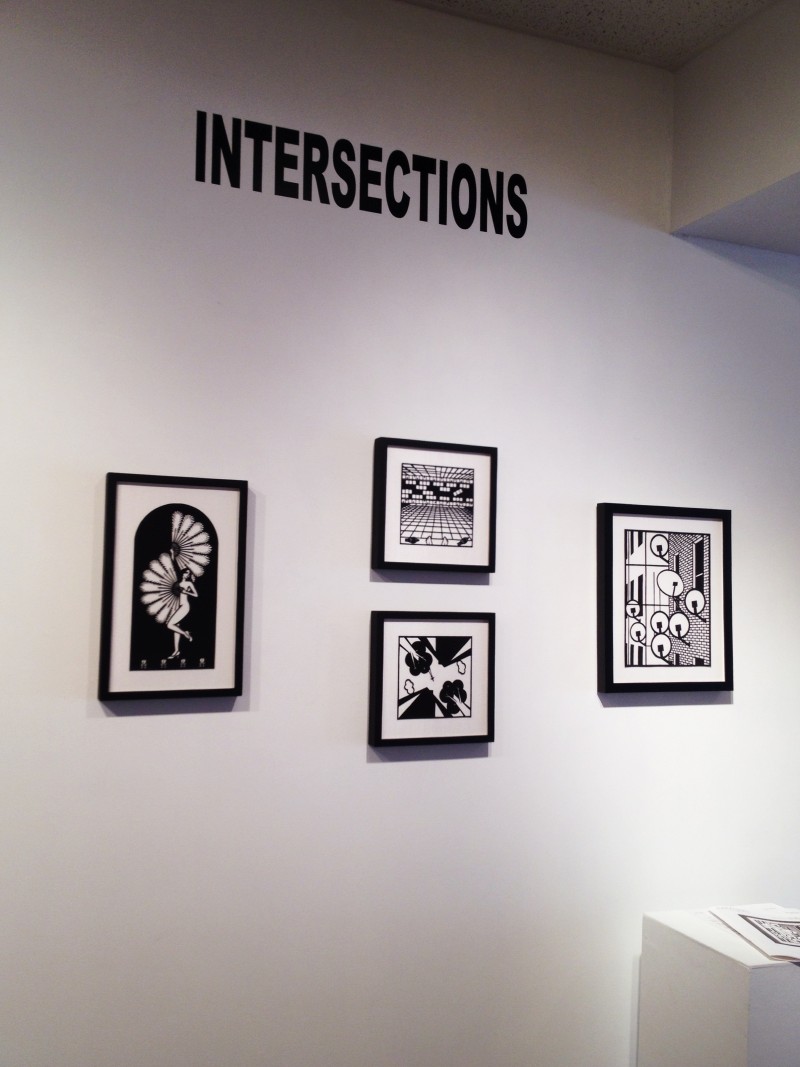
Philadelphia is certainly no stranger to public and street art: It is known, for example, for its vibrant outdoor murals produced by the successfully established Mural Arts Program, which began operating in 1986. Paradigm’s primary curator, Sara McCorriston, who gave me a comprehensive tour of the show, even stated that the street art movement developed here, in Philadelphia, before it eventually erupted in New York City. Both Boruchow and Kid Hazo are very much immersed in Philadelphia’s current, thriving public and street art scenes dominated by a new generation of artists. Boruchow is primarily a wheatpaster and a muralist, while Kid Hazo focuses on satirical, small-scale public installations.
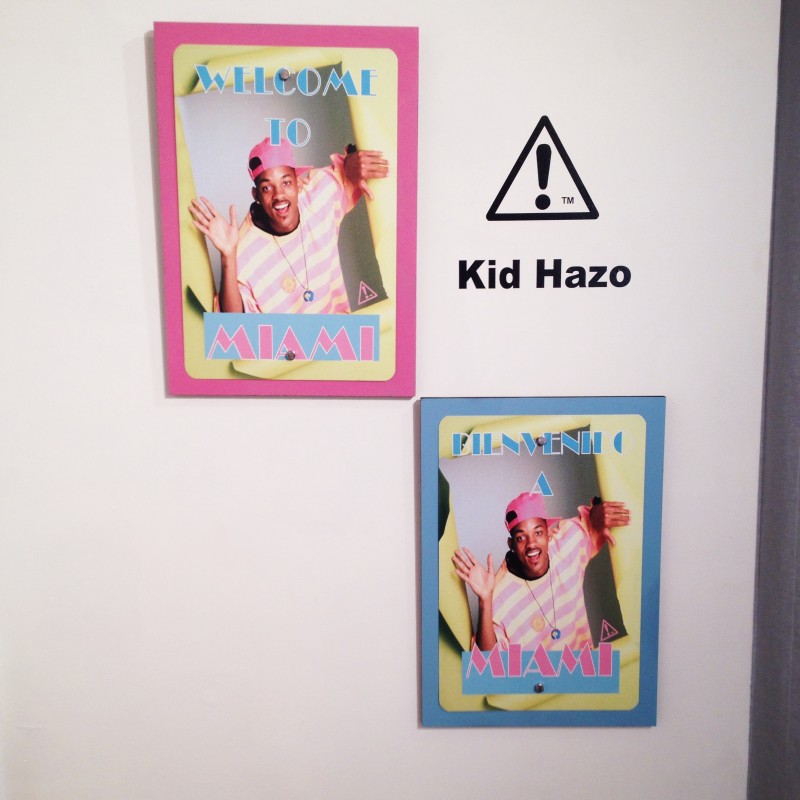
The show, which is situated at the back end of the gallery, is split almost evenly in half. Kid Hazo’s lighthearted pieces, many of which are mock street signs, occupy the left of the gallery, while Boruchow’s elegant cutouts are hung on the right. Even if you’re not completely familiar with the artists’ backgrounds, you can immediately get a sense of the stark contrast between the two collections of works. The show’s spatial dynamic works well with the theme of Intersections, and although Boruchow and Hazo’s works do not physically meet, they are presented face-to-face. As you move through the space, you may get the impression that the show is just a small taste of what Philadelphia’s street art scene has to offer.
Accessible fine art
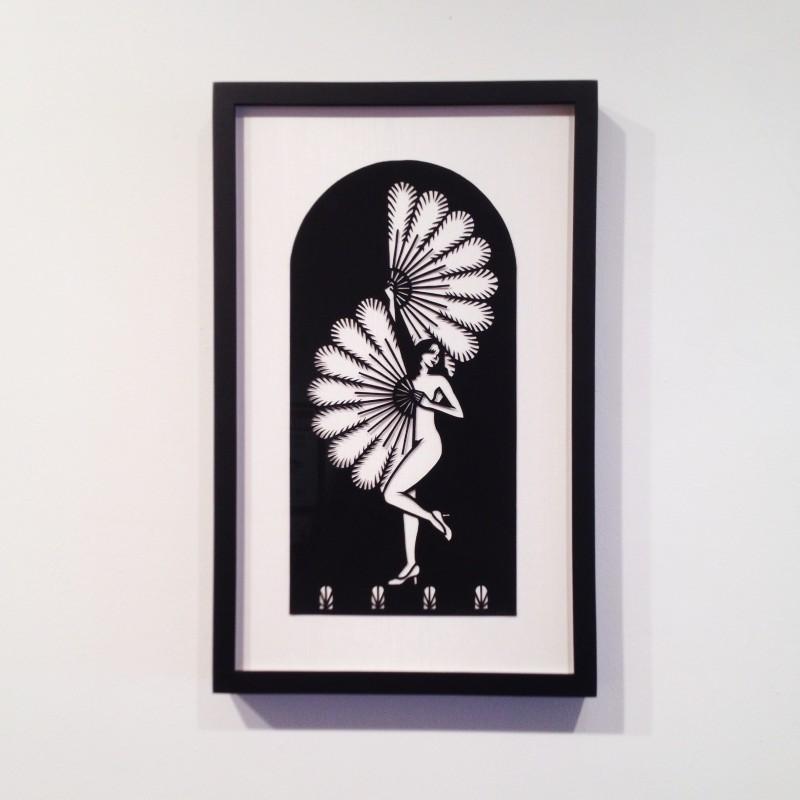
I remember the first time I was exposed to Joe Boruchow’s artwork. It was a wheatpaste poster called “Fan Dancer” (the original of which is currently on view at Paradigm) on the side of a metal mailbox situated on a Philly street; I was immediately intrigued. The image’s sharp contrast of black and white, and its beautifully crafted form against the backdrop of a gray street corner, was really like nothing I had ever seen. The “fine art” element is notable in Boruchow’s work, but it still remains true to the street art promise of accessibility.
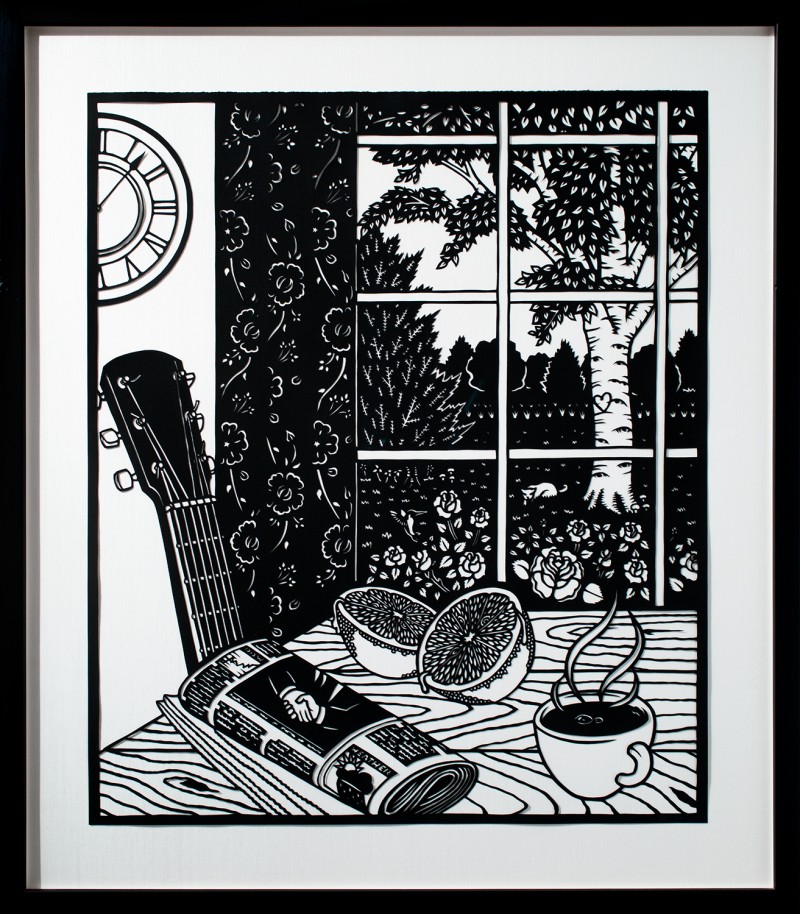
Boruchow’s “accessibility” is different, however, as it is not so immediate and not so in-your-face; there is a museum quality to his works in the sense that to fully appreciate their artistry, you must stand in front of the pieces and observe. The display of Boruchow’s original pieces–which are all meticulously crafted cutouts–in a gallery space works well to showcase his artistic diligence, such as in the gorgeous series of pieces titled Vanitas: The Deluge. His dual personality of “fine artist” in here and “street artist” out there is notable, as the work itself doesn’t change, but location changes the work.
Inside jokes and site-specific playfulness

Kid Hazo resides on the total opposite end of the public art spectrum. His pieces are saturated in humor and “Philly-isms,” as Sara called them. Hazo takes street signs and innocuous pop culture references and transforms them into inside jokes that often correspond with Philadelphia culture, but can easily have value to any passerby.
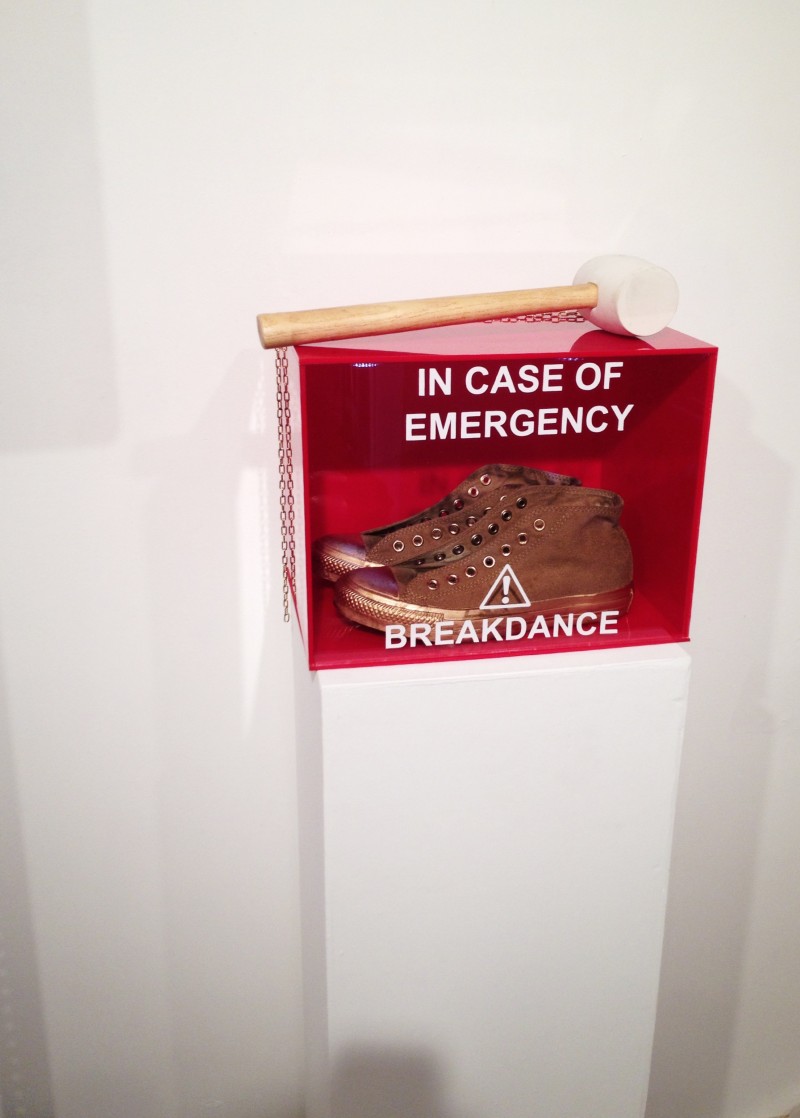
Who can ignore the large eyes he placed on the enormous orange paint glob outside of PAFA, part of Claes Oldenburg’s 51-foot “Paint Torch” sculpture, to make it look officially like the iPhone poop emoji? Everyone was thinking it, but Kid Hazo said it. His pieces are direct and immediate and often involve humor and parody. Sometimes they even involve general societal criticism, like the timely piece “Insecurity,” which consists of two security cameras paired with a metal sign stating, “Notice, These Cameras Are Not Real…Have Fun!” Kid Hazo works less in the realm of Joe Boruchow, wheatpasters, and muralists, and more in the realm of street artists such as the U.K. based Slinkachu or German artist Evol, who use objects to create public installation.
Paradigm’s Intersections represents one of the ways street art can be viewed within more controlled spaces, and although we are used to bigger-name artists such as Banksy working in a commercial art realm, it’s always exciting to see beloved, local “underground” artists recognized at the forefront more and more. Besides, formal and informal definitions of street art are changing every day, as does our understanding of street art’s importance. In a city like Philadelphia, art like Boruchow’s and Kid Hazo’s can change a facade or simply brighten your day, and Paradigm’s display effort should be noted and commended.
INTERSECTIONS: Works by Joe Boruchow and Kid Hazo is on view at Paradigm Gallery + Studio until Oct. 10, 2015.









